Return
Gastronomy » Sights Religious and Monuments in Armenia
|
Ref ID: 1AR2017/2250 | Posted On: 13-03-2017 | Updated on: 18-07-2018
|
|
Khachkar - Armenian cross-stone
A khachkar, also known as an Armenian cross-stone (Armenian: խաչքար,pronounced [χɑtʃʰˈkʰɑɾ], խաչ xačʿ "cross" + քար kʿar "stone") is a carved, memorial stelebearing a cross, and often with additional motifs such as rosettes, interlaces, and botanical motifs.[2] Khachkars are characteristic of Medieval Christian Armenian art.
Since 2010, khachkars, their symbolism and craftsmanship are inscribed in the UNESCO list of Intangible Cultural Heritage.
Description
History
The first true khachkars appeared in the 9th century,[1] during the time of Armenianrevival after liberation from Arab rule. The oldest khachkar with a known date was carved in 879 (though earlier, cruder, examples exist). Erected in Garni, it is dedicated to queen Katranide I, the wife of king Ashot I Bagratuni. The peak of the khachkar carving art was between the 12th and the 14th centuries. The art declined during theMongol invasion at the end of the 14th century. It revived in the 16th and 17th centuries, but the artistic heights of the 14th century were never achieved again. Today, the tradition still remains, and one can still see khachkar carvers in some parts of Yerevan.[6]
About 40,000 khachkars survive today. Most of them are free standing, though those recording donations are usually built into monastery walls. The following three khachkars are believed[by whom?] to be the finest examples of the art form:
- One in Geghard, carved in 1213, probably by master Timot and master Mkhitar
- The Holy Redeemer khachkar in Haghpat (see gallery), carved in 1273 by masterVahram
- A khachkar in Goshavank, carved in 1291 by master Poghos.
A number of good examples have been transferred to the Historical Museum in Yerevanand beside the cathedral in Echmiadzin. The largest surviving collection of khachkars is in Armenia, at Noraduz cemetery on the western shore of the Lake Sevan, where an old graveyard with around 900 khachkars from various periods and of various styles can be seen. The largest number was formerly located at Julfa in the Nakhichevan Autonomous Republic of Azerbaijan, but the entire medieval cemetery was destroyed by Azeri soldiers in 2005. [7]
Present
The art of carving khachkars has witnessed a rebirth as a symbol of Armenian culture in the 20th century. There are hundreds of khachkars worldwide, many of which are memorials to commemorate the victims of the Armenian Genocide. According to one count, there are nearly 30 khachkars on public locations in France.
Endangered khachkars
A large portion of khachkars, which were created in historic Armenia and surrounding regions, in modern times have become the possession of Turkey, Azerbaijan, and partly Georgia and Iran. As a result of systematic eradication of khachkars inTurkey, today only a few examples survive. Unfortunately these few survivors are not cataloged and properly photographed. Thus, it is difficult to follow up with the current situation. One documented example took place in the Armenian Cemetery in Jugha.
One source says that khachkars are being damaged, neglected, or moved in Armenia.
Types
Amenaprkich (Armenian: Ամէնափրկիչ, meaning Holy Saviour) is a particular type of khachkar in which on the cross is a depiction of the crucified Christ. Only a few such designs are known, and most date from the late 13th century.
A khachkar behind the cathedral in Echmiadzin, Armenia. Place of origin is unknown.
Gallery

A modern khachkar at Sourp Kevork church- Beirut, Lebanon (2016)

in Gyumri


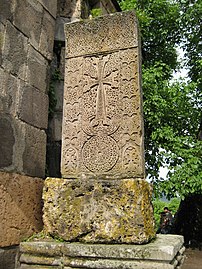
Khachkar at Haghartsin Monastery, near Dilijan, Armenia.

The Holy Saviorkhachkar in Haghpat(1273)

Various khachkars at Makaravank Monastery in Armenia

A modern Amenaprkich-type khatchkar with two others at the Sourp Nshan Church in downtown Beirut,Lebanon (2001)

A modern khackhar at the Armenian Catholicossate of Ciliciain Antelias, Lebanon

A khachkar in Sanahin

A monumental medieval khatchkar at the Armenian monastery ofSanahin in 1902
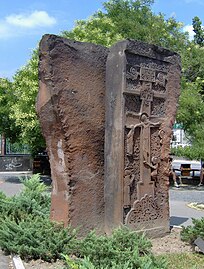
A modern, Amenaprkich-type, khachkar in Novi Sad, Serbia (1993)

A large 13th-century khachkar at Gandzasar Monastery in Nagorno-Karabakh

The famous double khachkars of the Memorial Bell-Tower of the Dadivank Monastery inNagorno-Karabakh

Modern khachkar (1999), St. James Armenian Church in Watertown, MA, USA

Modern khachkar (2004),Kraków, Poland
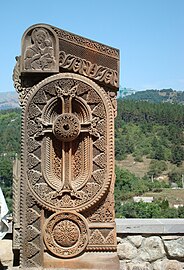
Modern khachkar atGoshavank
A modern khachkar with traditional Armenian symbolism inYerevan

Reasons cited for moving these khachkars include; decoration, to create new holy places, or to make space for new burials.
The most common khachkar feature is a cross surmounting a rosette or a solar disc. The remainder of the stone face is typically filled with elaborate patterns of leaves,grapes, pomegranates, and bands of interlace. Occasionally a khachkar is surmounted by a cornice sometimes containing biblical or saintly figures.
Most early khachkars were erected for the salvation of the soul of either a living or a deceased person. Otherwise they were intended to commemorate a military victory, the construction of a church, or as a form of protection from natural disasters.
The most common location for early khachkars was in a graveyard. However, Armenian gravestones take many other forms, and only a minority are khachkars.





Click on photo to view full image or click to watch video.

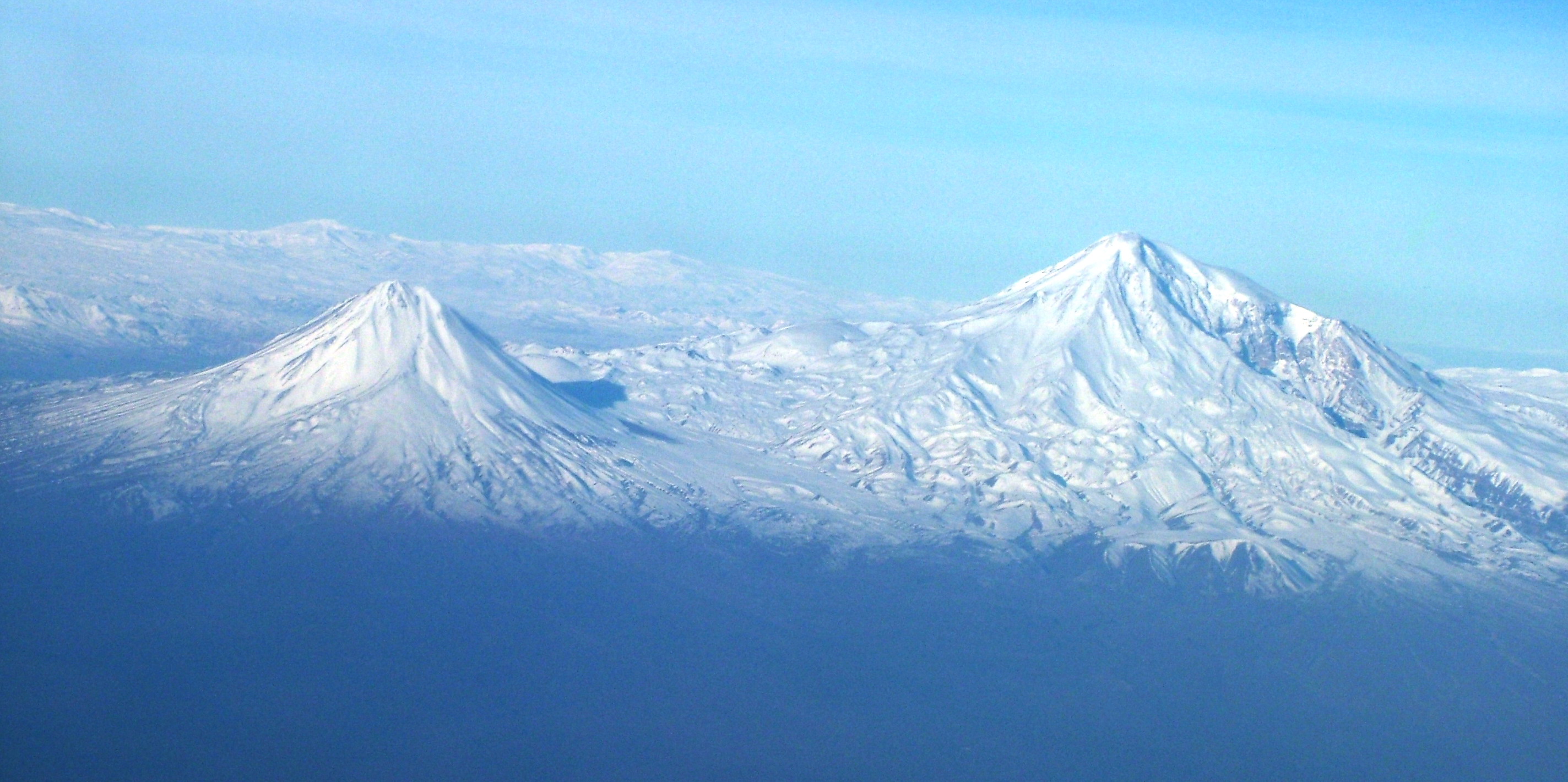

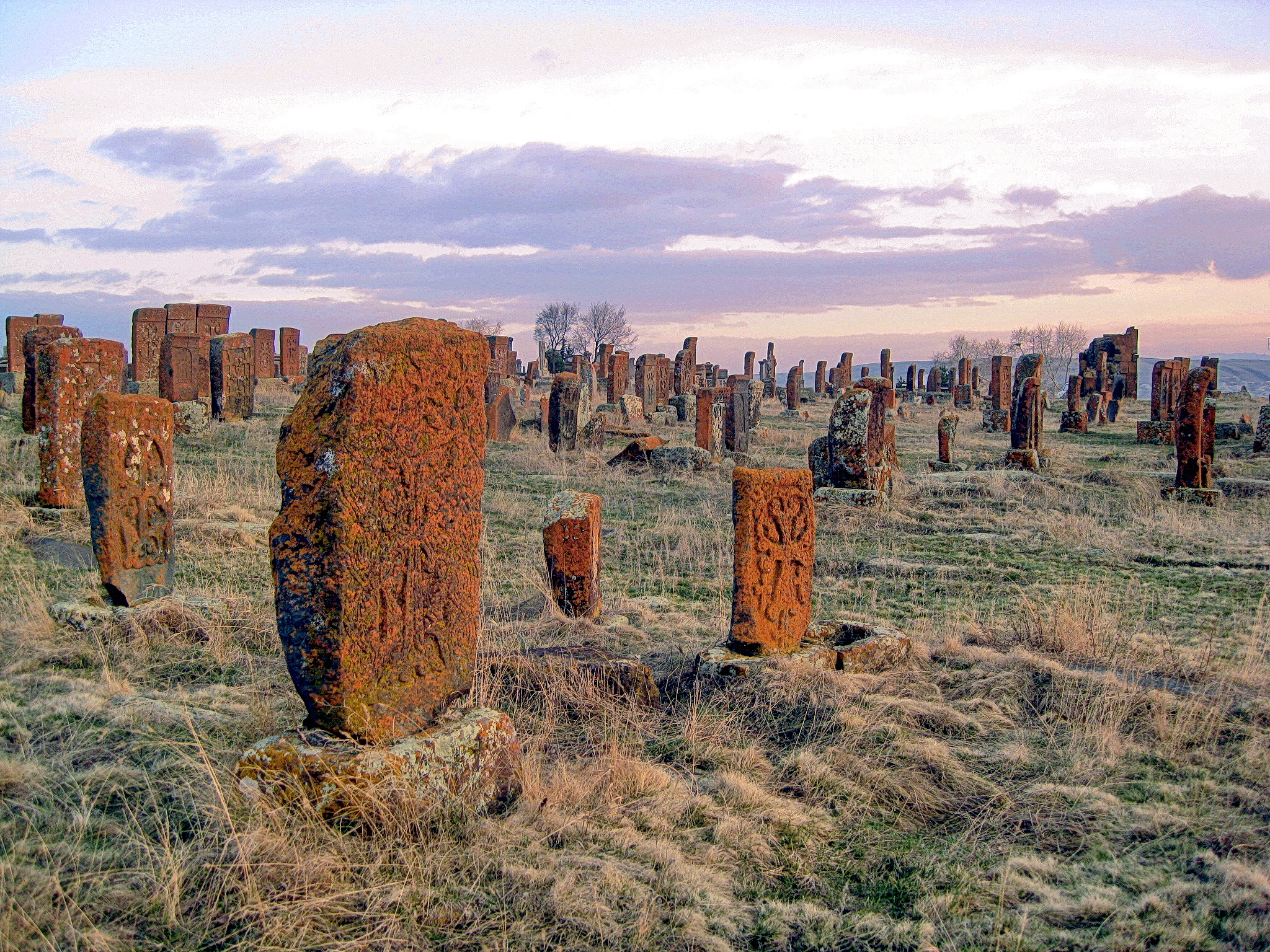
.jpg)